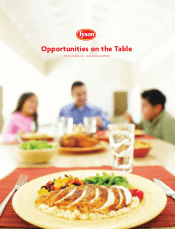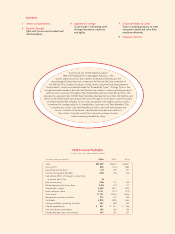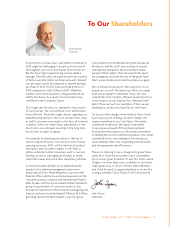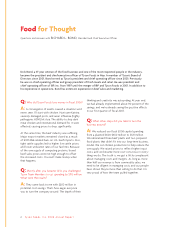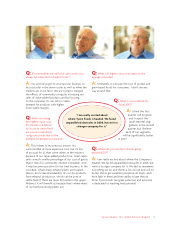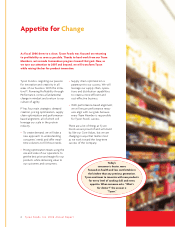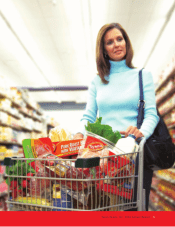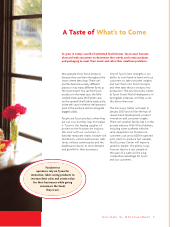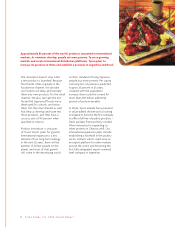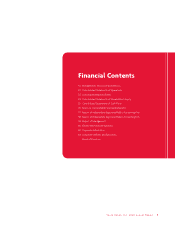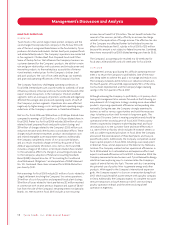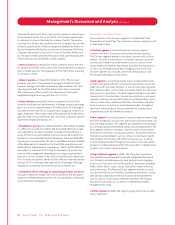Tyson Foods 2006 Annual Report Download - page 5
Download and view the complete annual report
Please find page 5 of the 2006 Tyson Foods annual report below. You can navigate through the pages in the report by either clicking on the pages listed below, or by using the keyword search tool below to find specific information within the annual report.
Q:If commodities are half your sales, won’t you
always be subjected to market forces?
A:Yes, and we’ve got to structure our business to
be successful in the down cycles as well as when the
markets are in our favor. We are trying to mitigate
the effects of commodity swings by increasing our
sales of value-added products and by focusing
on the consumer. It’s our job to create
demand for products with higher,
more stable margins.
Q:With corn being
the highest input cost
for chicken in addition
to its use in cattle feed,
are you worried about
rising corn prices due to the
demand for ethanol production?
A:This relates to my previous answer. Yes,
we’re mindful of more expensive corn, but it’s less
of an issue for us than some others in the industry
because of our value-added product mix. Grain repre-
sents a much smaller percentage of our cost of goods
than it does for commodity chicken companies. And
it may become a positive for our beef business. In the
Corn Belt, where many ethanol plants are located,
there is an increased availability of corn by-products
from ethanol production, which can be used in
cattle feed. If there are more fed cattle in the upper
Midwest, it will benefit us because that’s where many
of our beef processing plants are.
Q:What will higher corn prices mean to the
average consumer?
A:Ultimately, it will raise the cost of protein and
grain-based foods for consumers. I don’t see any
way around that.
Q:What is your outlook for
fiscal 2007?
A:I think the first
quarter will be good,
and I expect the
usual seasonal slug-
gishness in the second
quarter,but I believe
each of our segments
will be significantly better
in 2007.
Q:Where do you see Tyson Foods going
beyond 2007?
A:I am really excited about where the Company is
headed. We faced unparalleled obstacles in 2006, but
we’re a stronger company for it. We had to reexamine
everything we do, and there’s a lot we can and will do
better. We’ve got excellent people at all levels, and I
have faith in them and their ability to get the job
done. Tyson Foods has great potential, and everyone
is dedicated to reaching that potential.
Ty s on Foods, Inc. 2006 Annual Report3
“I am really excited about
where Tyson Foods is headed. We faced
unparalleled obstacles in 2006, but we’re a
stronger company for it.”

